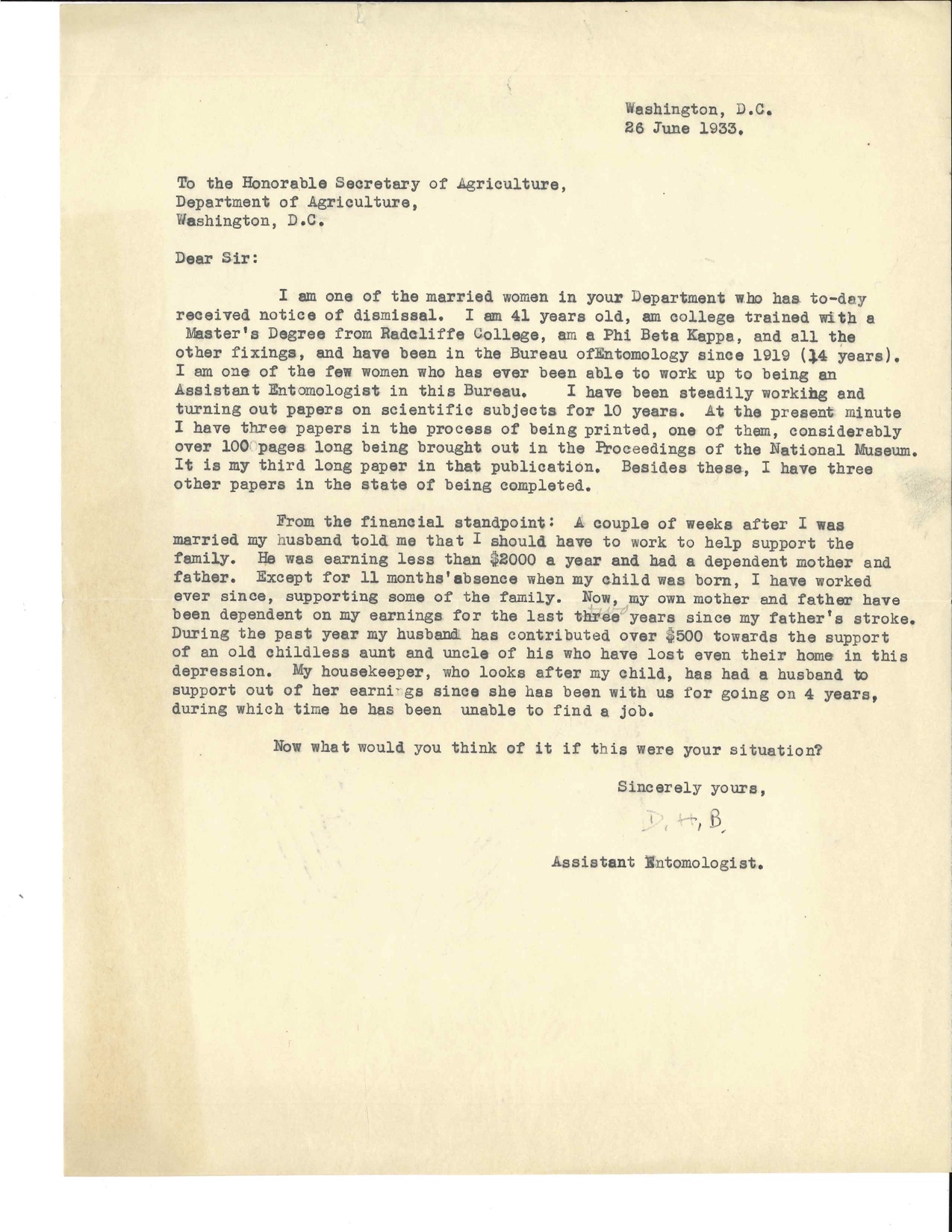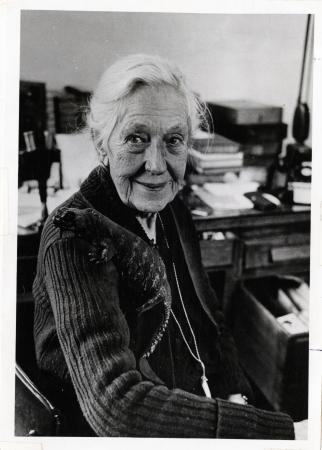On Sunday, February 5, 1933, the Government Workers’ Council of the National Woman’s Party organized a mass meeting at Washington, D.C.’s Masonic Auditorium to urge the repeal of Section 213 of the 1932 Economy Act. Referred to as the “married workers clause,” Section 213 required that in instances of staff reductions in the federal government or Washington D.C., government employees with spouses who also worked for the federal government should be terminated first. Because wives almost always earned less than their husbands in this period, the law mostly cost women their positions. As reported in the Sunday morning edition of The Evening Star newspaper, about three hundred men and women gathered in the auditorium, which was decorated with the purple, yellow, and gold banners previously used to picket the White House for women’s rights. Speakers from the National Woman’s Party, the U.S. Civil Service Commission, and the District of Columbia Federation of Women’s Clubs denounced Section 213 as a “blow to feminine rights” and affirmed their commitment to “fight to uphold women’s rights to paid employment.”
As the National Woman’s Party event demonstrates, Section 213 was immediately controversial. Herbert Hoover signed the Economy Act of 1932 into law during the Great Depression to reduce federal salary expenditures. Despite protest, the law stayed in effect for five years until it was repealed in 1937. However, the repeal did not provide for the reinstatement of married women’s positions. In fact, as reported by the New York Times in 1937, only 154 out of about 1,600 government workers who lost their jobs got them back.
This Depression-era history of gender discrimination is relevant to the Smithsonian. In 1933, Smithsonian entomologist Doris Holmes Blake wrote to the Secretary of Agriculture protesting her own recent termination under Section 213.
I am one of the married women in your Department who has to-day received notice of dismissal. I am 41 years old, am college trained with a Master’s Degree from Radcliffe College, am Phi Beta Kappa, and all the other fixings, and have been in the Bureau of Entomology since 1919 (14 years). I am one of the few women who has ever been able to work up to being an Assistant Entomologist in this Bureau.
See the entirety of Blake’s letter here:

This letter is a pretty incredible archival find. (I can say that, because I didn’t find it. Thanks to my colleagues at the Archives who shared it with me!) In Blake’s own words, we see how she protested her termination and the hardship it would cause her family.
Today, terminating a federal employee solely on the basis of their gender or sex is illegal. In the 1930s, however, sex discrimination was accepted and common. In fact, many states had laws in this period that prevented married women from work outside the home, and organizations, like school boards, could legally discriminate against married women in this period, as well. Through Doris Holmes Blake’s story, we see the personal cost that these discriminatory laws had on working women.

Blake would go on to work unpaid for most of her career. According to a biography of Blake published in The Proceedings of the Entomological Society of Washington, She continued studying beetles at the Smithsonian until her death in 1978. She proposed 25 generic and 818 species-group names in 96 papers published between 1924 to 1978. And by the 1970s, Blake was an honored figure in Smithsonian history. In a 1977 article in The Washington Star, Blake described some of the sexism she faced during her career. From a member of the entomology department hiding the beetle specimens she wished to work with to being denied workspace in the entomology department, the author detailed how Blake was treated as a “female outcast” in a “man’s scientific world.” For more information about Blake’s inspiring career despite the discrimination she faced, see this earlier blog.
Related Resources
- “Married Workers’ Clause Repeal is Urged by Women,” The Evening Star, 6 February 1933.
- Winifred Mallon, “Empty Triumph for Women Revealed in Repeal of Section 213,” New York Times, 17 October 1937.
- John Thomas McGuire, “The Most Unjustified Piece of Legislation: Section 213 of the Economy Act of 1932 and Feminism During the New Deal,” Journal of Policy History, Volume 20, Number 4, 2008, pp. 516-541.
- John Sherwood, “Doris Blake: The Courtly Coleopterist,” The Washington Star, 9 January 1977.
- “Doris Holmes Blake and Her Natural History,” by Tatiana Swann, The Bigger Picture, Smithsonian Institution Archives
- "How a 51 Year Old Field Notebook Triggered an Investigation at the Smithsonian," by Sarah Allen, Smithsonian Collections Blog
Produced by the Smithsonian Institution Archives. For copyright questions, please see the Terms of Use.

Leave a Comment